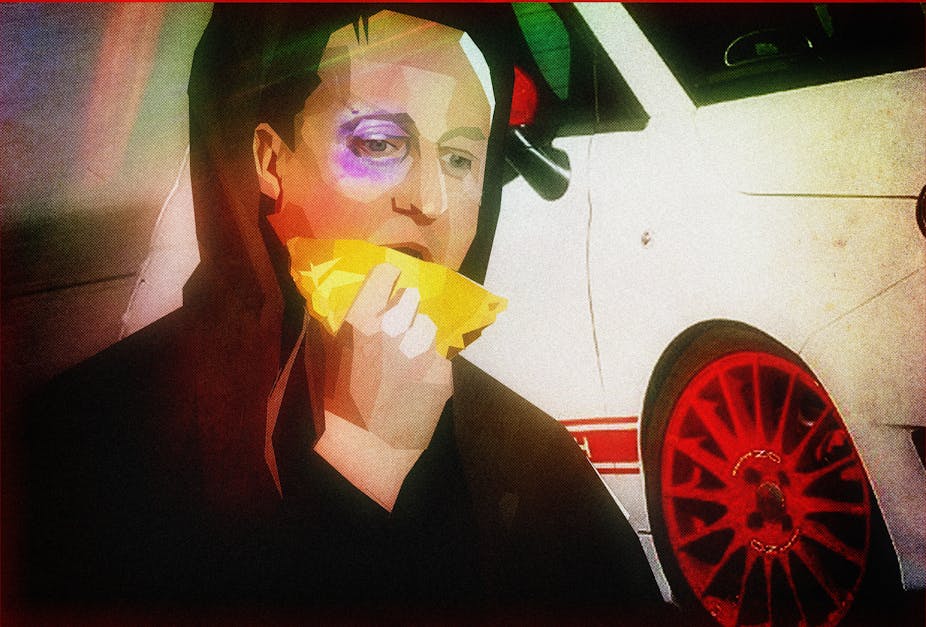Smoking, drinking and hanging around street corners is a common characterisation of a bored, unhealthy, unemployed youth. Life is getting worse for young people, we’re often led to believe, but what do the statistics say?
We recently collated data from publicly available surveys of different aspects of adolescent health and well-being. It showed that many aspects of life for young people are, on the contrary, actually quite encouraging.
Much of the negative health behaviour associated with the 1980s and 1990s - such as smoking and drinking - seem to have passed their peak.

Drugs and alcohol
For example, average trends in drug and alcohol use show a levelling off or reduction and annual surveys conducted by the Department of Health have shown increases in the proportion of young people who don’t drink at all.
The latest data suggest that more than half (59%) of 11-15 year olds now abstain, and the average amount of alcohol drunk in the past week by pupils who had had a drink fell between 2007 and 2011.
The number who smoke is also going down; the proportion of 11 to 15-year-olds who were regular smokers has halved since 2001.

Analyses in the international Health Behaviour in School Aged Children study, which looks at trends in physical violence between adolescents across 30 countries, showed a decline over time in two thirds of the countries it looked at.
Experimentation with illegal drugs does remain common, but proportions have fallen again in recent years to a quarter of 15-year-old boys and a fifth of 15-year-old girls.
Young people also make good use of sexual health advice, as evidenced by falling rates of teenage pregnancy. And exam achievement is high; between the early 1990s and 2012, the proportion of young people achieving five or more A*-C GCSE grades has more than doubled.
Mental health
It’s true that there is good evidence showing long-term increases in adolescent mental health problems and antisocial behaviour, particularly between the end of the World War II and the end of the 20th century.
And it is true that rates of anxiety and depression, objectively measured in national surveys, are still at levels that are above those of the 1980s. But there is little evidence to suggest that these rises are continuing - at least for the moment. We lack good, up-to-date data, but comparisons between 1999 and 2004 suggested no increases.
Reading the small print
Trends can tell us much of a story but there are some important provisos. The first relates to what has been called the tyranny of the mean: the averages look good, but what is happening to important subgroups? It is quite possible that different groups of young people are experiencing social change in quite different ways, which may cancel each other out if we take their age group as a homogeneous whole.
In our collated data we explored some of the important social determinants of health such as the amount of income a family has, deprivation in the area and unemployment. But we need to know much more than we do to date. It is clear that some outcomes vary considerably depending on social, family and educational experiences. One thing that would really help would be more of a focus on data that specifically relates to adolescents, rather than treating children and young people as one statistical block.
The second proviso relates to the economic future. Young people aged 18-25 years appear to be bearing the brunt of changes to the domestic and global economy. The youth labour market has changed substantially in recent decades – collapsed, one might say.

Canaries in coalmine
In economic terms, young people are our canaries down the mine. High rates of unemployment have been demonstrated across Europe for this age group – an average of 21.4% unemployment for the under-25s in 2011. Long-term youth unemployment now accounts for a higher proportion of total unemployment in the UK than it used to.
Zero-hour contracts, underemployment, financial pressure leading to more dependence on family and difficulties getting on the housing ladder – they have more of all these things than any other age group. We know these types of experiences are not good for emotional or physical health. We may not be able to give young people jobs, but as a society we have to think about how to enable them to make a contribution and to feel fulfilled, perhaps in the absence of a functioning youth labour market.
Young people are facing huge social changes and may be the frontline of some of these major impacts. It’s clear that we have to watch their health carefully. The results caused by being a buffer may be physical but it’s very likely there could be repercussions on mental health.
Part of watching carefully is making sure we’ve got the right data. It also means that we should work towards getting a complete and real picture, rather than fall on lazy stereotypes about a younger generation.
Hard Evidence is a series of articles in which academics use research evidence to tackle the trickiest public policy questions.

